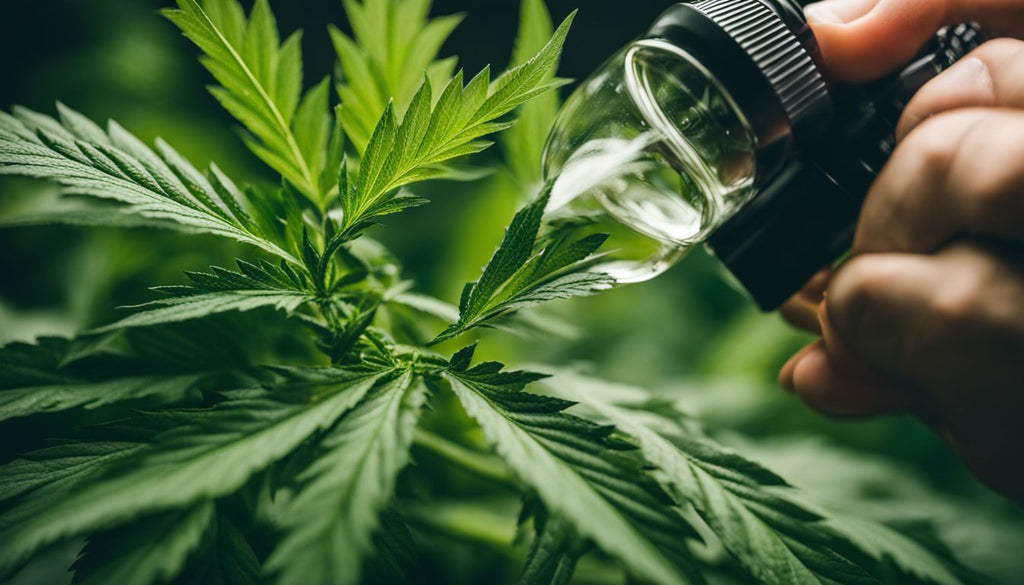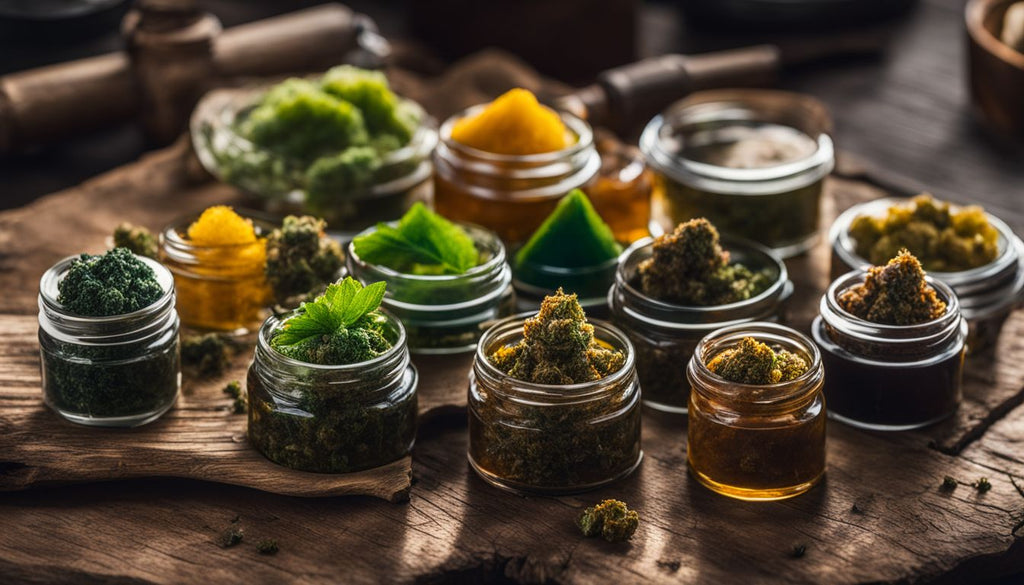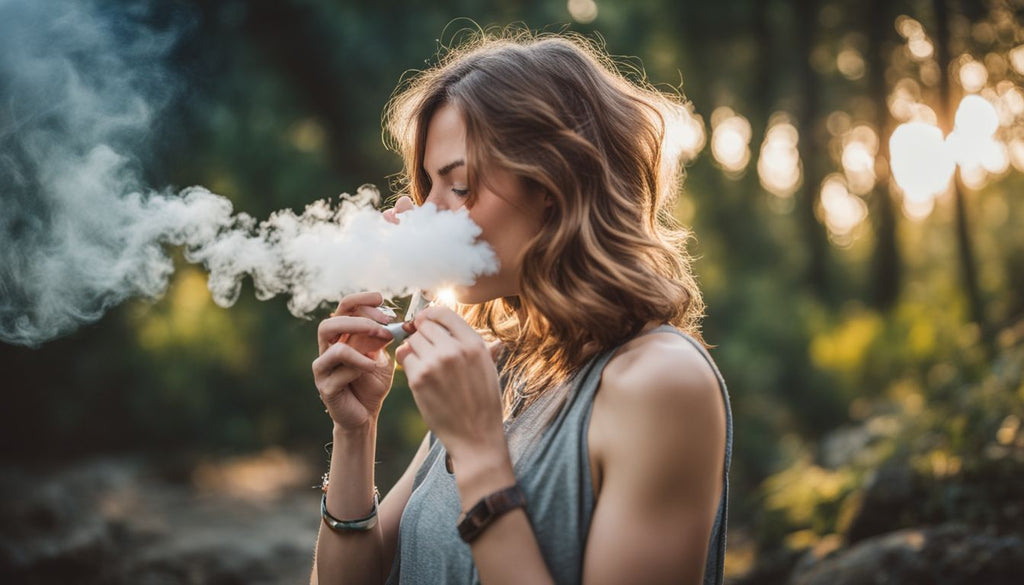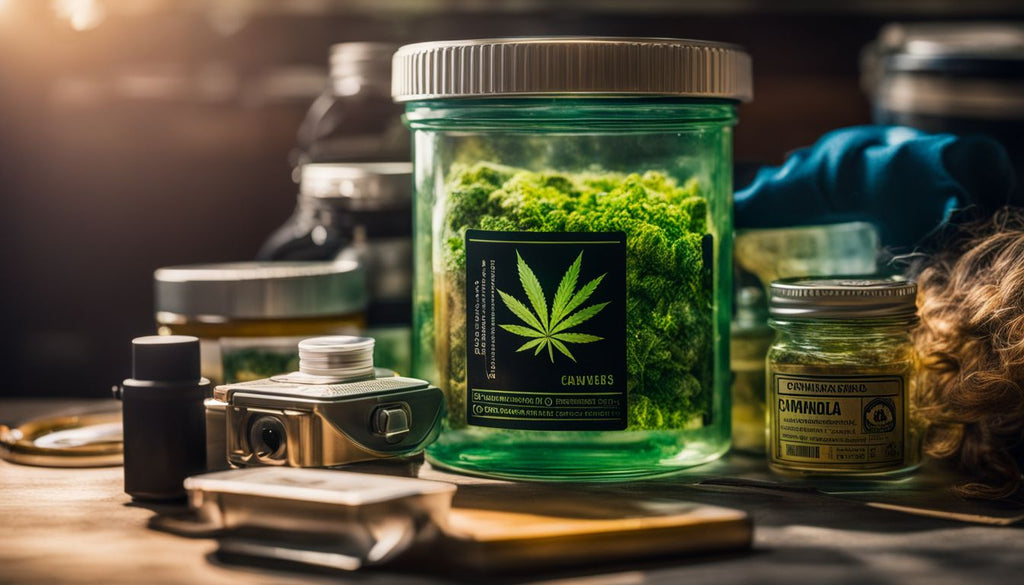What is a Dab Weed? A Beginner's Guide to Cannabis Concentrates

Many people are curious about different ways to enjoy cannabis. A dab weed is a type of cannabis concentrate known for its high THC content. This guide will dive into what dabs are, their types, and how to use them safely.
Let's get started!
Key Takeaways
- Dab weed is a highly concentrated form of cannabis that comes in different types like BHO, shatter, budder, dab wax, and live resin. Each type has a unique texture and potency level due to the way it's made.
- People use dabs because they have much higher THC levels than regular marijuana, which means you need less of it to feel strong effects. However, because dabs are so potent, users should start with small amounts to avoid overwhelming experiences.
- Unlike smoking dried cannabis flowers, dabbing involves vaporizing concentrates on a hot surface. This method allows for more efficient delivery of cannabinoids and terpenes without burning plant material.
- Safety risks associated with dabbing include fire hazards from using butane torches and the potential presence of contaminants like pesticides or residual solvents in poorly made products. Always buy from reputable sources to minimize health risks.
- Legal concerns around dabbing vary depending on where you live; be sure to check your local laws regarding cannabis concentrates. It’s also important for individuals to educate themselves about responsible consumption practices.
What is a Dab Weed?

Dab weed is a concentrated form of cannabis known for its high THC levels and potent effects. It is consumed through vaporization, offering a more intense experience compared to traditional methods of marijuana consumption.
Definition of a dab
A dab refers to a concentrated form of cannabis, usually resembling wax or oil. This cannabis concentrate comes from extracting THC and other cannabinoids using solvents like butane or carbon dioxide, resulting in products such as BHO (Butane Hash Oil).
The process captures potent compounds from the cannabis plant, offering a more intense experience than traditional smoking methods.
Users vaporize these concentrates on a hot surface, typically referred to as dabbing. This method delivers high THC concentrations quickly into the bloodstream. Because dabs contain much higher levels of THC compared to regular marijuana flowers, they produce stronger effects.
Dabbing has become popular among users seeking significant relief or an enhanced recreational experience.
How it differs from traditional cannabis consumption
While traditional cannabis consumption involves smoking the dried flowers or buds of the marijuana plant, dabbing uses concentrated cannabis extracts. Unlike traditional methods that involve combustion, dabbing uses a heated surface to vaporize the concentrate.
This process allows for a higher potency and quicker onset of effects compared to smoking dried flower. Additionally, dabbing provides a more efficient delivery of cannabinoids and terpenes, offering a different experience from traditional consumption methods.
In contrast to smoking joints or using bongs, dabs offer a cleaner inhalation experience with reduced exposure to potential toxins from burning plant material. Moreover, due to their higher potency, smaller amounts of concentrates are needed to achieve the desired effect compared to consuming larger amounts of flower.
THC levels and potency
When considering THC levels and potency, it's crucial to understand the impact of dabbing compared to traditional cannabis consumption. Concentrates like BHO, shatter, and budder contain extremely high levels of THC, often surpassing 60-80%.
This means that a small amount delivers a much more potent high than smoking or consuming edibles. It's essential for dabbers to be mindful of their tolerance and start with smaller doses when trying new concentrates.
Understanding the potency is key in responsible dab use.
The increased THC levels in dabs can lead to more intense psychoactive effects which may not be suitable for everyone. Additionally, overconsumption can result in adverse reactions such as anxiety or paranoia.
Different Types of Cannabis Dabs

Cannabis dabs come in various forms, such as butane hash oil (BHO), shatter, budder, dab wax and live resin. Each type has its own unique consistency and texture, affecting the overall dabbing experience.
Butane hash oil (BHO)

Butane hash oil (BHO) is a potent cannabis concentrate made by using butane as a solvent to extract THC and other cannabinoids from the marijuana plant. The extraction process involves packing the marijuana plant matter into a tube and passing liquid butane through it to dissolve the cannabinoids, then evaporating the butane to leave behind a concentrated oil.
BHO can contain extremely high levels of THC, making it much more potent than traditional cannabis flower. This concentrated form of THC allows for more efficient consumption, which may lead to stronger effects, so careful dosing is important when trying BHO or any other cannabis concentrate.
Shatter

Moving on from discussing Butane hash oil (BHO), another popular cannabis concentrate to explore is shatter. Shatter gets its name due to its brittle, glass-like appearance that shatters when broken.
It is a type of BHO, created through a process of purging butane and other solvents from the THC extract until it reaches a translucent, amber color and solidifies into a hard, glassy consistency.
This high-potency extract contains high levels of THC and offers an intense experience for those seeking powerful effects. Shatter can be consumed using a dab rig or vaporizer, making it a favorite choice among experienced consumers looking for strong and immediate relief.
Budder

Moving from shatter to budder, this cannabis concentrate has a creamy consistency due to its unique extraction process. Budder is created by purging and whipping butane hash oil (BHO) during the extraction process, resulting in a smooth and creamy texture that resembles butter.
Its high terpene content gives it a strong aroma and robust flavor profile, making it a popular choice among stoners looking for an intense sensory experience. With higher THC levels than traditional cannabis flowers, budder offers potent effects that can be enjoyed through various consumption methods such as dabbing or vaporizing.
Known for its versatility and potency, budder presents stoners with an array of options for experiencing the full effects of cannabis concentrates.
Dab wax

Dab wax refers to a thick, sticky cannabis concentrate created through the extraction process using solvents like butane or CO2. This extraction method results in a highly potent THC product with intense flavors and aromas.
The consistency of dab wax can range from crumbly to a more malleable texture, making it easy to handle. Dab wax is typically consumed by "dabbing," where a small amount is heated on a hot surface and the vapor is inhaled through a dab rig or dab pen for an immediate and powerful high.
The production of dab wax involves meticulously purging residual solvents from the concentrate, ensuring that it's safe for consumption. Due to its high potency, users should approach dab wax with caution, starting with small doses until they understand their tolerance level and effects.
Live resin
Live resin is a cannabis concentrate that stands out for its high terpene content, preserving the plant's original flavors and aromas. During the extraction process, fresh cannabis flowers are frozen to maintain their natural properties before being processed.
This method allows live resin to retain a more aromatic profile compared to other concentrates while still possessing high THC levels. The resulting product offers users an enhanced sensory experience, making it a popular choice among those seeking a potent and flavorful dabbing experience.
The unique extraction process of live resin sets it apart from other concentrates by capturing the full essence of the cannabis plant. This method preserves not only the cannabinoid content but also the terpenes, providing consumers with a more complete representation of the original strain's effects and characteristics.
Safety and Risks of Dabbing
Dabbing poses fire hazards due to the volatile nature of butane hash oil extraction. Individuals should be aware of legal concerns and potential contaminants when using cannabis concentrates.
Fire hazards
Improper handling of cannabis dabs can lead to fire hazards. Poorly maintained equipment, like butane torches used for heating the dab rig, poses a significant risk of accidental fires and burns.
It is vital to ensure that all dabbing tools are properly stored and handled to prevent potential dangers.
Using butane or other flammable materials indoors increases the chances of fire outbreaks. Always take precautionary measures when storing and using dabs to minimize the risk of fire hazards.
Keep your dabbing area well-ventilated, free from any flammable objects, and away from sources of ignition.
Legal concerns

Legal concerns surrounding dabbing mainly involve the regulations on cannabis concentrates and the potential legal consequences of possession or use. Understanding local laws regarding THC extraction, marijuana extracts, and recreational inhalation is essential to avoid any legal issues related to dabbing.
It's important for users to be aware of the specific regulations around cannabis concentrate products in their area, ensuring they are compliant with state laws.
Maintaining an understanding of current legislation concerning marijuana concentrates and staying informed about any changes in legality can help individuals make informed decisions about their dabbing practices.
Contaminants

Contaminants in dab weed can pose serious health risks to consumers. These may include residual solvents from the extraction process, pesticides, mold, and heavy metals. Residual solvents like butane in BHO concentrates can be harmful when inhaled.
Pesticide residue on cannabis plants can have adverse effects on the body when concentrated into dabs. Similarly, the presence of mold and heavy metals in cannabis concentrates can lead to severe health problems if consumed.
To ensure safety and minimize health risks, it's essential for stoners to use reputable sources for their dabs and carefully research the products they are purchasing. Regular lab testing of concentrate products is crucial to identify any potential contaminants before consumption.
Physiological and psychological effects

The physiological effects of dabbing can be intense, with a quick onset due to the high concentration of THC. When the user inhales the vapor, it rapidly enters the bloodstream and travels to the brain, leading to a sudden and powerful high.
This can result in increased heart rate, blood pressure, and impaired motor coordination. Additionally, dabbing may cause dry mouth, red eyes, and potential short-term memory impairment.
Psychologically, dab weed can lead to intense euphoria and altered perception of time or sensory experiences. Users may also experience anxiety or paranoia if they consume too much THC in a short period.
These psychological effects can vary depending on individual tolerance levels and previous cannabis use history.
Treatment and Education for Dab Use
Dab use treatment options include addiction counseling and support groups. Educational resources offer insight into the effects of THC and responsible dab consumption.
Addiction treatment options
Seeking help for dab addiction is a crucial step towards recovery. Here are some addiction treatment options to consider:
- Outpatient therapy: Attending regular sessions with a therapist can provide valuable support and guidance.
- Inpatient rehabilitation: These programs offer intensive, round-the-clock care and support for individuals struggling with dab addiction.
- Support groups: Joining a group of peers facing similar challenges can provide a sense of community and understanding.
- Medication-assisted treatment: Some medications can help manage cravings and withdrawal symptoms, supporting the recovery process.
- Dual diagnosis treatment: If there are underlying mental health issues, seeking treatment for both substance use and mental health concerns is essential.
Educational resources
Transitioning from addiction treatment options to educational resources, stoners can benefit from accessing various educational materials and programs to expand their knowledge of cannabis concentrates. Engaging with these resources can help individuals make more informed decisions about dabbing and its potential effects.
- Online educational platforms such as Leafly and High Times provide comprehensive information on different types of cannabis concentrates, including how they are made, their potency, and potential risks.
- Local dispensaries often offer educational seminars or workshops where experts share insights into the properties of cannabis concentrates, consumption methods, and harm reduction strategies.
- Community organizations and advocacy groups may host informational events or distribute pamphlets that cover topics like responsible dabbing practices, legal regulations, and harm reduction techniques.
- Medical professionals specializing in cannabis medicine can offer personalized guidance on safe consumption practices, cannabinoid therapy, and the potential therapeutic benefits of using cannabis concentrates.
- Literature such as scientific studies, books authored by reputable professionals in the field, and peer-reviewed articles can provide valuable insight into the biochemical mechanisms of cannabis concentrates and their impact on the body.
Research on THC and the endocannabinoid system
Research has shown that THC, the active compound in cannabis, interacts with the endocannabinoid system in the body. This complex network of neurotransmitters and receptors plays a crucial role in regulating various physiological functions such as mood, memory, appetite, and pain sensation.
Studies have suggested that THC binds to cannabinoid receptors in the brain and throughout the body, influencing these functions. Understanding how THC affects the endocannabinoid system can provide valuable insights into its potential medical applications and help individuals make informed decisions about its use.
Investigations into THC and the endocannabinoid system have also revealed that regular cannabis use can lead to changes in receptor sensitivity and overall function within this system.
Importance of responsible dab use
Responsible dab use is crucial for ensuring a positive experience with cannabis concentrates. By carefully managing dosage and frequency, individuals can minimize the risk of adverse effects on their physical and mental well-being.
It is important to prioritize safety by using quality products from reputable sources and being mindful of potential contaminants. Additionally, staying informed about the potency and composition of different types of dabs can help users make educated choices that align with their personal needs and preferences.
Practicing responsible dab use also involves being aware of legal regulations surrounding cannabis consumption in one's area. Understanding these laws can prevent legal complications and ensure compliance with local statutes.
Conclusion

Dab weed is a concentrated form of cannabis derived from the resin of the Cannabis Sativa plant. It offers higher THC levels and potency compared to traditional cannabis consumption.
However, dabbing poses safety risks such as fire hazards, legal concerns, and potential contaminants. Responsible dab use involves seeking addiction treatment if necessary and educating oneself about the physiological and psychological effects of THC on the body.
FAQs
1. What is dab weed in simple terms?
Dab weed, or a "dab," refers to highly concentrated cannabis resin extracted from the Cannabis Sativa plant. People use it to experience stronger effects than regular marijuana.
2. How do people consume dab?
People consume dabs through a process called dabbing, which involves heating the cannabis concentrate on a hot surface and then inhaling the vapor that comes off.
3. Is there a difference between CBD and dab weed?
Yes, there's a difference! CBD (Cannabidiol) is one component of cannabis with relaxation properties but doesn't get you high, while dab weed contains higher THC levels, responsible for marijuana's psychoactive effects.
4. What makes BHO (Butane Hash Oil) related to dabs?
BHO, or Butane Hash Oil, is one method used to extract the potent cannabis resin from the plant material. This oil can then be used as "dab" for its strong effects when consumed by dabbing.






![Pipe by Vessel [Gunmetal] - Headshop.com](http://www.headshop.com/cdn/shop/files/76cd9387-8d22-4015-bd12-46bbbcef263a_{width}x.jpg?v=1682452995)
![Pipe by Vessel [Gunmetal] - Headshop.com](http://www.headshop.com/cdn/shop/files/57468aee-c849-45b9-9000-ec1eaa3e3910_{width}x.jpg?v=1682452997)



























Leave a comment